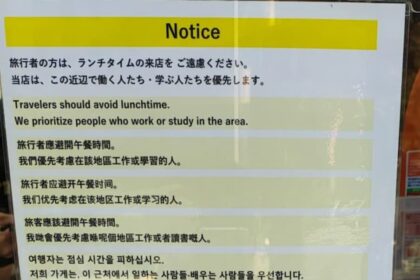A conviction that tests bank data safeguards
A former junior officer at United Overseas Bank has been convicted for disclosing the personal details of more than 1,000 customers to someone posing as a Chinese police officer. The case, which began with a March 2021 approach by scammers and culminated in an October 2025 conviction, highlights how social engineering can defeat internal controls when an insider is pressured to break rules. The defendant, 30 year old Singapore permanent resident and Chinese national Cao Wenqing, was found guilty of 14 charges under the Computer Misuse Act and 13 under the Banking Act. Sentencing is expected in December.
- A conviction that tests bank data safeguards
- What happened inside the bank system
- How the impersonation scheme worked
- Legal findings and what the court decided
- How UOB responded and the protection steps offered to customers
- Why insider data abuse is difficult to stop
- Impersonation scams in Singapore, a persistent threat
- What you can do to reduce your risk
- What this case signals for banks and regulators
- Key Points
According to the court’s findings, Cao accessed confidential customer records through her legitimate work login, compiled selected records into a spreadsheet, and transmitted images of that data via a messaging app to a person who claimed to be a Shanghai police captain. She later told authorities she had believed she was under investigation and felt compelled to comply. The court rejected this as a legal defense, noting her training on confidentiality and her failure to verify the identities of the callers until after the leak had already happened.
What happened inside the bank system
Cao worked in UOB’s mortgage department, where she had access to a bank database strictly for work. In March 2021, two individuals approached her via phone, introduced themselves as Chinese police, and warned that she was implicated in a case. On their instructions, she searched for customers with common Chinese surnames, filtered for Chinese nationals, and copied their names, identification numbers, mobile numbers, and bank balances into an Excel file. She then photographed the spreadsheet and sent the images through WhatsApp. On request, she also searched for specific customers and sent screenshots of their profiles.
The database she accessed contained fields such as names, nationalities, addresses, identification numbers, account numbers, and balances. In the immediate aftermath, UOB stated that customer account numbers were not disclosed and that the bank’s systems remained secure. Even without account numbers, the combination of names, ID numbers, mobile numbers, and balances is highly sensitive. Criminals can use such information to mount convincing social engineering schemes, take over accounts by tricking victims, or combine the data with other leaks to commit fraud.
In April 2021, after reading about a similar scam and contacting the Shanghai police herself, Cao concluded that she had been deceived. She made a report to the Singapore Police Force the same day she was arrested. Investigators later found that she had accessed more than 3,000 customer profiles and transmitted the details of well over 1,000 customers.
How the impersonation scheme worked
The callers played on authority, urgency, and fear. Government officer impersonation scams often begin with a claim that a victim is under investigation, followed by pressure to cooperate in secret. Victims are told to keep the call private and to follow instructions immediately, which can include sharing personal data or making transfers. Such tactics aim to bypass critical thinking by making the target worry about legal consequences or employment status.
Investigators said Cao complied because she feared inquiries by the supposed Chinese police and did not want to lose her job or be sent back to China. This is a common pattern in coercive phone scams. Persistent demands, threats of legal action, and requests to communicate only on specific apps can create a false sense of official procedure. The most reliable defense in these situations is an independent verification. Hang up, call the actual agency using official numbers, and confirm whether there is a real case.
Legal findings and what the court decided
The court concluded that Cao knew customer data was confidential and that access was permitted only for work. She received training on banking secrecy and data handling. The judge found it unreasonable that she did not verify the identities of the people who contacted her, given that she later did exactly that after reading media reports about such scams. The court also pointed out that she knew her actions breached internal policy and Singapore law, which undermined her claim that she acted under pressure in good faith. The verdict: guilty on 14 charges under the Computer Misuse Act and 13 under the Banking Act.
Under the Computer Misuse Act, unauthorized access to computer material is a criminal offense. The Banking Act prohibits bank staff and service providers from disclosing customer information except under tightly defined circumstances. Penalties vary by charge, but they can include fines and jail terms. Cao’s sentencing is scheduled for December.
How UOB responded and the protection steps offered to customers
UOB said it worked with the Singapore Police Force and other agencies after discovering the leak. The bank contacted all affected customers, disabled internet and mobile banking access, and supported them in resetting their digital credentials. It stepped up monitoring, added SMS alerts for low value online transfers, and posted warnings at login about ongoing scams. The bank apologized and said the security of customers remains a top priority.
UOB also said its systems were secure and that account numbers were not part of the disclosure. While this lessens the risk of direct unauthorized withdrawals, the exposed information still makes customers targets for phishing, call spoofing, and social engineering. As a precaution, the bank advised vigilance and stressed the need for customers to report any suspicious activity immediately.
The bank said it is cooperating with law enforcement and relevant authorities. A public note on the incident was made available as an official statement, which outlined the bank’s immediate actions and guidance for customers. You can read the bank’s notice here: official statement.
Why insider data abuse is difficult to stop
Banks invest in layered defenses that aim to prevent both external intrusions and internal misuse. Access controls, audit logs, and monitoring tools restrict who can see what and flag unusual activity. The challenge is that staff roles often require access to sensitive information in order to serve customers. When an insider chooses to break rules, or is manipulated into doing so, the misuse can resemble ordinary work tasks.
This case illustrates a common weak point. Even if a bank deploys content filters and prevents large exports of data, a determined insider can capture information by taking photos of screens with a personal phone. Reducing that risk requires a mix of technical and procedural safeguards. These include time bound permissioning, tighter segmentation of who can search for which fields, watermarking and screen capture controls, and restrictions on device usage in sensitive workspaces. Real time alerts can flag searches that match unusual patterns, for example, looking up thousands of unrelated records across many branches or filtering on nationality without a documented work purpose.
Training and culture also matter. Staff need to be equipped to recognize impersonation tactics, to pause and verify, and to escalate suspicious requests to supervisors or security teams. Clear channels for reporting coercion or suspicious calls can make it easier for employees to seek help before damage occurs.
Impersonation scams in Singapore, a persistent threat
Government officer impersonation scams have become one of the most costly fraud types in Singapore. Scammers often claim to be from the police or a foreign law enforcement agency, present fake documents or warrant cards, and even pose in front of backdrops that resemble official settings. They may demand that victims move funds for “investigation,” share banking information, send one time passwords, or install remote control software. Many victims comply because the calls sound official and the threats feel real.
Public advisories stress that legitimate officers do not ask for banking credentials, One Time Passwords, or money transfers over the phone or on messaging apps. They will not direct you to click on links to banking websites. Calls that demand secrecy, ask for remote access to your devices, or request that you move savings into “safe accounts” are classic red flags. When in doubt, hang up and call the official hotline of the bank or agency that supposedly contacted you.
In recent years, Singapore has invested in anti scam education and tools to help the public screen calls and messages. Banks have added transaction alerts, cooling off periods for new payees, and “kill switch” features that allow customers to suspend digital access quickly if they suspect compromise. These measures reduce risk, but they do not eliminate it. Criminal groups keep adapting, and they target both customers and employees.
What you can do to reduce your risk
A few practical steps can stop the most common tactics used in cases like this.
- Verify authority claims. If someone says they are a police officer or bank employee, hang up and call the agency or bank using an official number. Do not return calls to numbers provided in the message.
- Protect credentials. Never share banking details, Singpass credentials, card numbers, or one time passwords over phone or messaging apps.
- Watch for urgency and secrecy. Requests to keep a conversation secret, fast track a decision, or move funds to a “safe account” are strong warning signs.
- Use bank alerts. Enable low value SMS alerts for transfers and changes to your profile. Set transaction limits and review your statements frequently.
- Secure your devices. Install updates, use official app stores, and avoid installing remote access tools unless guided by a trusted technician whom you contacted independently.
- Report quickly. If you suspect your data or accounts are compromised, call your bank immediately and make a police report. Rapid action can block or recover funds.
What this case signals for banks and regulators
Financial institutions operate under strict confidentiality and technology risk standards. In Singapore, the Banking Act requires that customer information be kept confidential except in defined situations, and the Monetary Authority of Singapore sets detailed expectations for technology risk management. That includes access governance, activity monitoring, incident response, and security training. Cases that involve insider misuse typically trigger reviews of data access rules, monitoring thresholds, and staff handling procedures.
The UOB case underscores how a single insider can put many customers at risk when fear or coercion overrides training. It also shows that prompt containment, direct outreach to customers, and transparency about protective steps build trust after an incident. Continued investments in verification culture, stronger controls on mass lookups, and rapid response capabilities can make it harder for scammers to turn insiders into unwilling accomplices.
Key Points
- Ex UOB employee convicted on 14 Computer Misuse Act charges and 13 Banking Act charges for leaking data on more than 1,000 customers.
- She compiled customer names, identification numbers, mobile numbers, and balances, then sent images via WhatsApp to a person posing as a Chinese police officer.
- The judge ruled she knew the rules, failed to verify the callers, and acted despite understanding the conduct breached policy and law.
- UOB contacted affected customers, disabled digital access, added alerts, and worked with authorities; the bank said account numbers were not disclosed and systems were secure.
- Sentencing is set for December; penalties can include fines and jail terms under both the Computer Misuse Act and the Banking Act.
- Impersonation scams remain widespread; official agencies and banks do not request banking credentials or money transfers by phone or messaging apps.
- Customers can reduce risk by verifying callers independently, protecting credentials, enabling transaction alerts, and reporting suspicious activity quickly.












